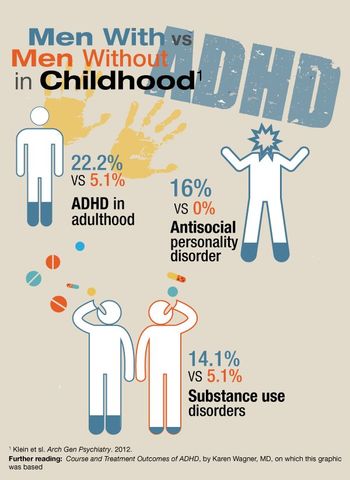
- Psychiatric Times Vol 15 No 3
- Volume 15
- Issue 3
Preadoption Risk Factors
Although adoption dates back centuries, the issue of whether or not adopted children are at risk for psychological maladjustment remains controversial. That this dispute would occur at all is not surprising, since as recently as 1926 laws which liberalized adoptions in England were faced with a widespread objection that adoption would encourage depraved conduct.
Although adoption dates back centuries, the issue of whether or not adopted children are at risk for psychological maladjustment remains controversial. That this dispute would occur at all is not surprising, since as recently as 1926 laws which liberalized adoptions in England were faced with a widespread objection that adoption would encourage depraved conduct (Tizard, 1991; Lipman et al., 1992).
Adopted children are exposed to many stressors that could increase their risks for psychological maladjustment. The biologic parents of children given up for adoption have a high incidence of impulse control problems such as hyperkinesis, chemical dependency and personality disorder. Adopted children are therefore at genetic risk for these disorders. Also, women who become pregnant out of wedlock and later give up their children for adoption often fail to seek prenatal medical care and are at risk of giving birth to premature and low birth weight infants (Kotsopoulos et al., 1993; Rogeness et al., 1993).
Before a permanent adoption placement, adopted children often endure poor nutritional and health status, poor living conditions, discontinuous care taking, disharmonious family environments, inadequate stimulation and affection, neglect and abuse (Tizard, 1991). A study of foreign adopted children by Verhulst and colleagues (1992) found that 45% of the sample experienced neglect, 13% were abused, 54% experienced at least one change in caretakers, 6% experienced three or more changes in caretaking environments, and 43% were in poor physical health upon placement with the adoptive family.
Challenges of Adoptive Childhood
The challenges that adoptive children and parents face do not cease after the formal adoption process has occurred. Adopted children must confront the difficult questions of whom their biologic parents are and why they are no longer with them. Adopted children sometimes account for the narcissistic injury caused by their perceived abandonment by assuming that they were somehow unacceptable to their biologic parents. This rationalization can lead to low self-esteem and fear of future abandonment (Nickman, 1985).
Adopted children are naturally inquisitive about their own backgrounds and that of their biologic families. Unfortunately, they have a double hindrance in this regard, as they usually find it difficult to find their personal histories, and are likely to have feelings of ambivalence and anxiety about what they might discover (Sants, 1964). Unresolved questions about their backgrounds can lead to obstacles in healthy identity formation. A strong identification with an idealized image of their biologic parents sometimes fills the emotional void resulting from these lingering uncertainties. Identification with the idealized biologic parents can compel the adopted child to reject and devalue his or her adoptive parents, which complicates the process of identity formation (Freud, 1959).
Adoptive parenthood involves difficult challenges as well. Adoptive parents must resolve the grief for the wished-for biologic child and come to terms with infertility issues. Anger directed toward the spouse held accountable for the inability or the choice not to conceive can taint family relationships. Insufficient emotional acceptance of the adoption alternative may result in a romanticized image of the biologic child who might have been. Failure to work through the loss of the biologic child can lead to feelings of rejection, alienation, entitlement and misdirected anger toward the adopted child, particularly if he or she fails to meet the adoptive parent's expectations (Solnit and Stark, 1961; Brinich, 1980).
Negative fantasies about the biologic parents can predispose the adoptive parents to be overly concerned about the adopted child's behaviors. These concerns can lead to a prohibitive attitude toward developmentally normal sexual and aggressive childhood activities. The resulting scrutiny by the adoptive parents can convey to the adoptee that the adoptive parents have a negative and antisocial image of him or her (Johnson and Szurek, 1952).
Outcomes of Adoption
Several factors have been associated with increased risk of psychological maladjustment in adoptees. In a study of foreign adoptees by Verhulst and colleagues (1992), problem behaviors were seen in 24% of the children who had been severely neglected, in 31% of the severely abused children, and in 50% of the children who experienced at least five changes in caretaking environments.
The child's age at placement has also been associated with the outcome. Better psychological adaptation has been associated with adoption during the first six months of age. Studies generally conclude that the earlier the placement of the child in the adoptive home, the better the outcome. Adoption at a young age is thought to spare the child many adverse life experiences such as multiple temporary placements and changes in caretakers. Additionally, the older adopted child might have habits and behaviors to which adoptive parents could have difficulty adjusting (Kotsopoulos et al., 1993; Verhulst et al., 1992; Warren, 1992).
Interestingly, transracial adoption has not been found a risk factor for psychological maladjustment. In a study of transracially adopted black children in the United States, McRoy and colleagues (1982) found no difference in overall self-esteem between transracially and intraracially adopted children. The self-esteem of the transracial adoptees was as high as that reported among individuals in the general population.
Clinical studies show that adopted children present more frequently for both inpatient and outpatient psychiatric treatment compared with the general population. The percentage of adopted children in psychiatric treatment settings ranges from 2.4 to 17 (Rogeness et al., 1988). Despite their higher propensity for presenting for psychiatric treatment, the actual incidence of psychiatric illness in adopted children has not been found higher than the incidence in the general population, except for hyperkinesis in adopted boys. In fact, adopted children do not differ from nonadopted children in the incidence of educational problems or substance abuse (Lipman et al., 1993; Kotsopoulos et al., 1988).
Recent studies, therefore, do not support the commonly held belief that adopted children appear more often in psychiatric settings primarily because they are more troubled. Adoptive families have been until recently largely from socioeconomic strata at or above the median, thus allowing for more access to psychiatric care. Also, most adoptions in the United States are accomplished through agencies that attempt to provide many support services such as mental health consultation. Finally, the adoptive family might see the adoptee as at increased risk for problems and may more quickly identify even minor difficulties as warranting treatment (Warren, 1992; Brinich and Brinich, 1982).
Despite the risks and challenges of adoption, the vast majority of adoptees do not manifest long-term problems, nor do they require psychiatric treatment (Warren, 1992). Bohman and Sigvardsson (1982) followed a cohort of adopted children through adulthood and found that whereas adopted boys had increased difficulties compared with nonadopted boys at 10 and 11 years old, few differences were found from 15 years of age onward. This suggests that the adverse effects of early life events can be offset by the adaptive capability of the mind and the affirmative influences of the adoptive family (Verhulst et al., 1992).
Perils Not Unlike Biologic Parenting
Adopted children and adoptive families are faced with many perils and difficulties. Despite the challenges that arise from working through adoption-related issues, most adopted children adjust well. We must be mindful, however, that being a member of an adopted family is a complex reality with which one must come to terms. Individuals assimilate that reality in different ways and with varying degrees of mastery.
References:
References
1.
Bohman M, Sigvardsson S (1982), Adoption and fostering as preventive measures. In: The Child in His Family, eds. Anthony EJ, Chiland C, New York, Wiley, pp.171-180.
2.
Brinich PM, Brinich EB (1982), Adoption and adaptation. J Nerv Ment Dis 170:489-493.
3.
Brinich PM (1980), Some potential effects of adoption on self and object representations. Psychoanal Study Child 35:107-133.
4.
Freud S (1959), Family romances. In: Collected Papers (Vol 5) ed. Strachey J, New York, Basic Books, 1959, pp. 74-78.
5.
Johnson AM, Szurek SA (1952), The genesis of antisocial acting out in children and adults. Psychoanal Q 21:323-343.
6.
Kotsopoulos S, Cote A, Joseph L et al. (1988), Psychiatric disorders in adopted children: A controlled study. Am J Orthopsychiatry 58:608-612.
7.
Kotsopoulos S, Walker S, Copping W et al. (1993), A psychiatric follow-up study of adoptees. Can J Psychiatry 38(6):391-396.
8.
Lipman EL, Offord DR, Boyle MH et al. (1993), Follow-up of psychiatric and educational morbidity among adopted children. J Am Acad Child Adolesc Psychiatry 32:1007-1012.
9.
Lipman EL, Offord DR, Racine YA et al. (1992), Psychiatric disorders in adopted children: A profile from the Ontario child health study. Can J Psychiatry 37:627-633.
10.
McRoy RC, Zurcher LA, Lauderdale MC et al. (1982), Self-esteem and racial identity in transracial and interracial adoptees. Soc Work 27:522-526.
11.
Nickman, S (1985), Losses in adoption: The need for dialogue. Psychoanal Study Child 40:365-398.
12.
Rogeness GA, Hoppe SK, Macedo CA et al. (1988), Psychopathology in hospitalized, adopted children. J Am Acad Child Adolesc Psychiatry 27:628-631.
13.
Sants NJ (1964), Genealogical bewilderment in children with substitute patents. Br J Med Psychol 37:133-141.
14.
Solnit A, Stark M (1961), Mourning and the birth of a defective child. Psychoanal Study Child 16:523-537.
15.
Tizard B (1991), Intercountry adoption: a review of the evidence. J Child Psychol Psychiatry 32:743-756.
16.
Verhulst FC, Althaus M, Bieman HJMV (1992), Damaging backgrounds: Later adjustment of international adoptees. J Am Acad Child Adolesc Psychiatry 31(3):518-524.
17.
Warren SB (1992), Lower threshold for referral for psychiatric treatment for adopted adolescents. J Am Acad Child Adolesc Psychiatry 31:512-527.
Articles in this issue
almost 28 years ago
Psychiatry and Mental Illness: Are They Mass Media Targets?almost 28 years ago
PTSD - Poemalmost 28 years ago
RUPPs Expand Knowledge of Pediatric Psychopharmacologyalmost 28 years ago
Atlanta's Strong STARTS Program Helps Educators Reach Troubled Kidsalmost 28 years ago
NIMH Cautiously Exploring Realm of Alternative Medicinealmost 28 years ago
Treating Adolescents by Debunking Family Mythsalmost 28 years ago
Bosnian Student Survivors at Home and in Exile: Findings and Reflectionsalmost 28 years ago
Sleep Deprivation, Psychosis and Mental Efficiencyalmost 28 years ago
The NICHD Study of Early Child CareNewsletter
Receive trusted psychiatric news, expert analysis, and clinical insights — subscribe today to support your practice and your patients.












